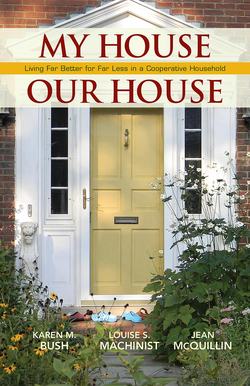Читать книгу My House Our House - Karen M. Bush - Страница 13
На сайте Литреса книга снята с продажи.
But There Are So Many Good Options!
ОглавлениеThe idea of communal housing is not new, but it remains a rare lifestyle choice for Americans. While many people choose to live alone, others don’t prefer single living, but believe that circumstances simply leave them no other option. Some people imagine innovative options, yet perceive a huge step from imagining a non-traditional living arrangement to taking the leap. Here’s how we know that. In our workshops on cooperative householding, we’ve met a surprising number of women who have considered the idea of living with sisters, cousins, college roommates, best friends, or joining with their partner and other couples; you name it. Their eyes light up when they hear our story – but then they tell us they haven’t done it because they just couldn’t visualize how to turn the dream into reality. At least “not yet.”
Actually, the innovative Baby Boomer generation is busily exploring alternative ways to address the downsides of single living. They are seeking and finding novel solutions to many practical, economic, social and safety issues, innovations made possible by freer attitudes about lifestyle choices and an expanded sense of community.
To some extent, necessity is the mother of invention. As fewer individuals remain “coupled” for life and incomes or other resources are stretched thin, new ways to manage emerge. In a mobile society, support systems are often based on proximity to friends and acquaintances rather than to biological families; it is increasingly difficult to maintain multi-generational nuclear or extended family households, although there is a growing trend for adult children and their parents to cohabitate.
Let’s take a quick look at some non-traditional group living situations that fall under the big umbrellas of intentional community and shared housing.
